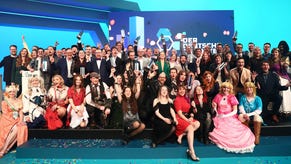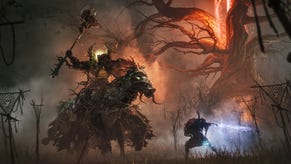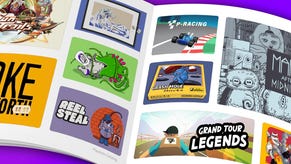Storytron's Crawford: Screw graphics, create better emotions
Austin GDC: Former developer urges creators to "ditch plot" and concentrate on the player
Opening the 2008 Austin Game Developers Conference, Storytron creator Chris Crawford explained his long absence from the games industry by saying that he felt it was "going down the wrong path," and that games should be "fundamentally about people, about social interactions, about us."
A former games developer, author, and one of the founders of the original gatherings that would become the Game Developers Conference itself, Crawford, in the rancorous style for which he has gained some renown, said that games as they exist today had shifted toward more mechanical styles - about puzzles, maps, navigations, without feelings or people.
Thus he outlined a number of major conceptual shifts that he said could bring interactive storytelling back in the direction it should have been following all along, starting by saying that they need to focus on "people, not things."
"You have to put people at the top of the priority list," he stressed, and stress the primacy of interactivity, which he called the "sine qua non of software," adding that "without interactivity, you ain't got nothin'." In one of his most contentious points, Crawford proclaimed "screw graphics," saying that that interactivity should always remain the focus.
"Graphics are a means to an end, not an end in itself," he said, contending that "graphics exist solely to support the interactivity," and that interactive storytellers needed to focus on what's important and that anything not central to interactivity is "just going to get in your way."
Crawford also boldly urged developers to "ditch plot", arguing that the difference between story and storytelling was profound, and that "interactive story" was an oxymoron, that story is data and facts, and storytelling is a process.
Instead, Crawford said storytellers should start with what users are meant to do in a world, and define the verbs that will achieve those goals. By listing the verbs, he said, "you have designed the software - everything after that is an engineering detail."
One of the main challenges to this method of storytelling, though, is the interface - command line interfaces too difficult for the average user, and GUIs more expressive but more limiting by design, suggesting instead that a "linguistic user interface" would be ideal – speaking in plain English to the computer - but as suggested by the Sapir-Whorf hypothesis, language cannot exist without reality, so to bring language to a computer, one would have to recreate reality itself at the same time.
A more workable solution, said Crawford, was to approach the problem as creating a toy language within a toy reality, and rather than attempting to build better parsers to take naturalistic input, invert the parser so the user is given all possible linguistic choices on a contextual level.
Crawford also suggested that storytellers "ditch space" - that it too, like graphics, are a distraction from the essence of storytelling and that programmers should never be the ones telling the stories, that just in the days when marketers wrongly assumed that they could design games, developers should leave the stories to the writers.
To that end, Crawford brought the session to a close suggesting attendees investigate Storytron, his software in development for some 15 years that attempts to bring all of these problems to a logical conclusion, with his writing partner and author Laura Mixon describing the emotional bonds she's made to characters created in her own worlds, and the shock of watching their own independent agency play itself out.







